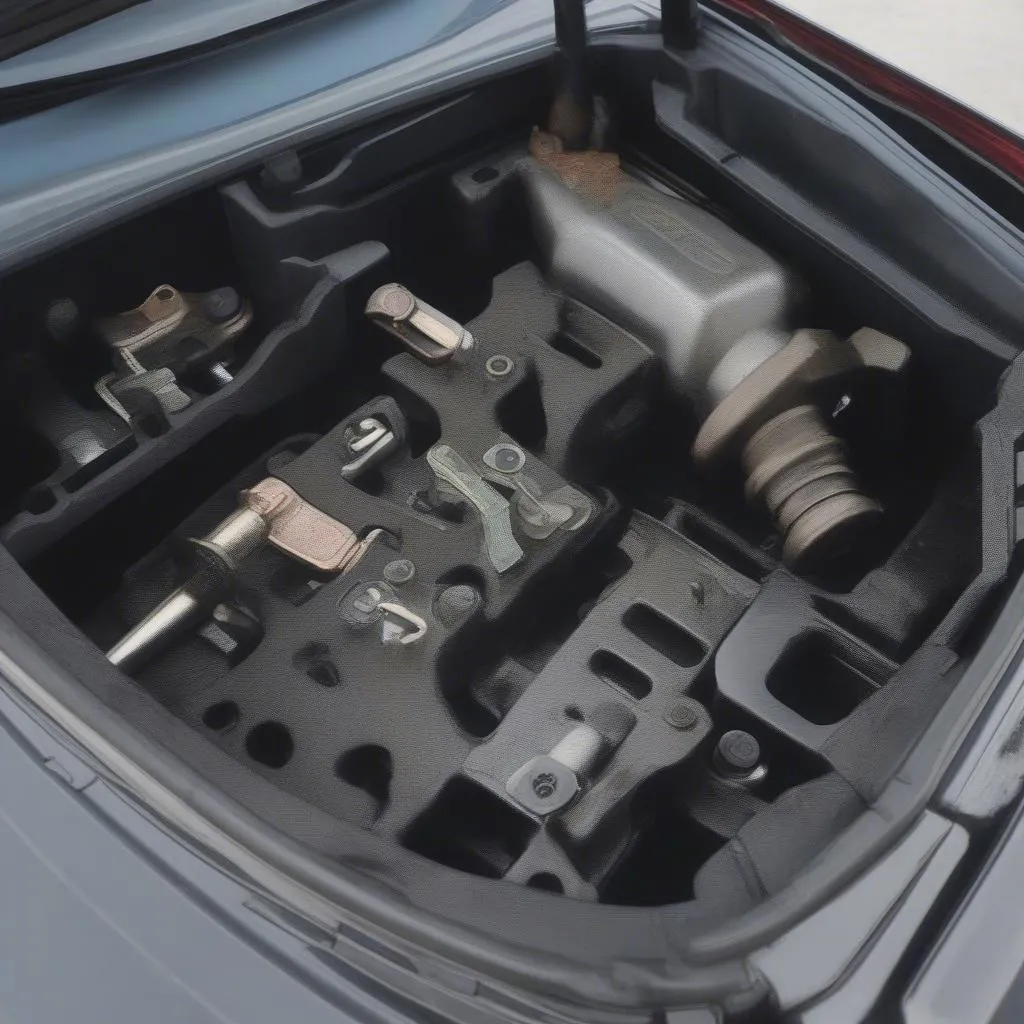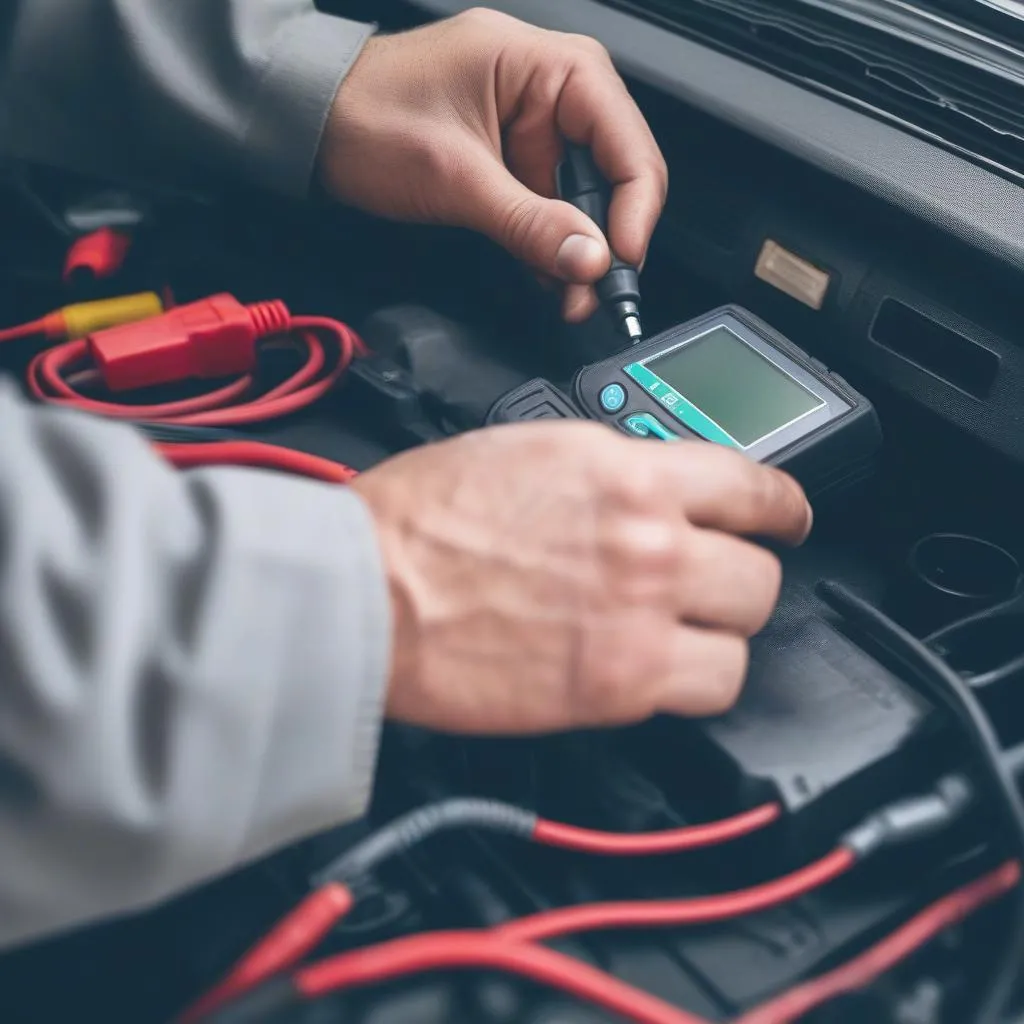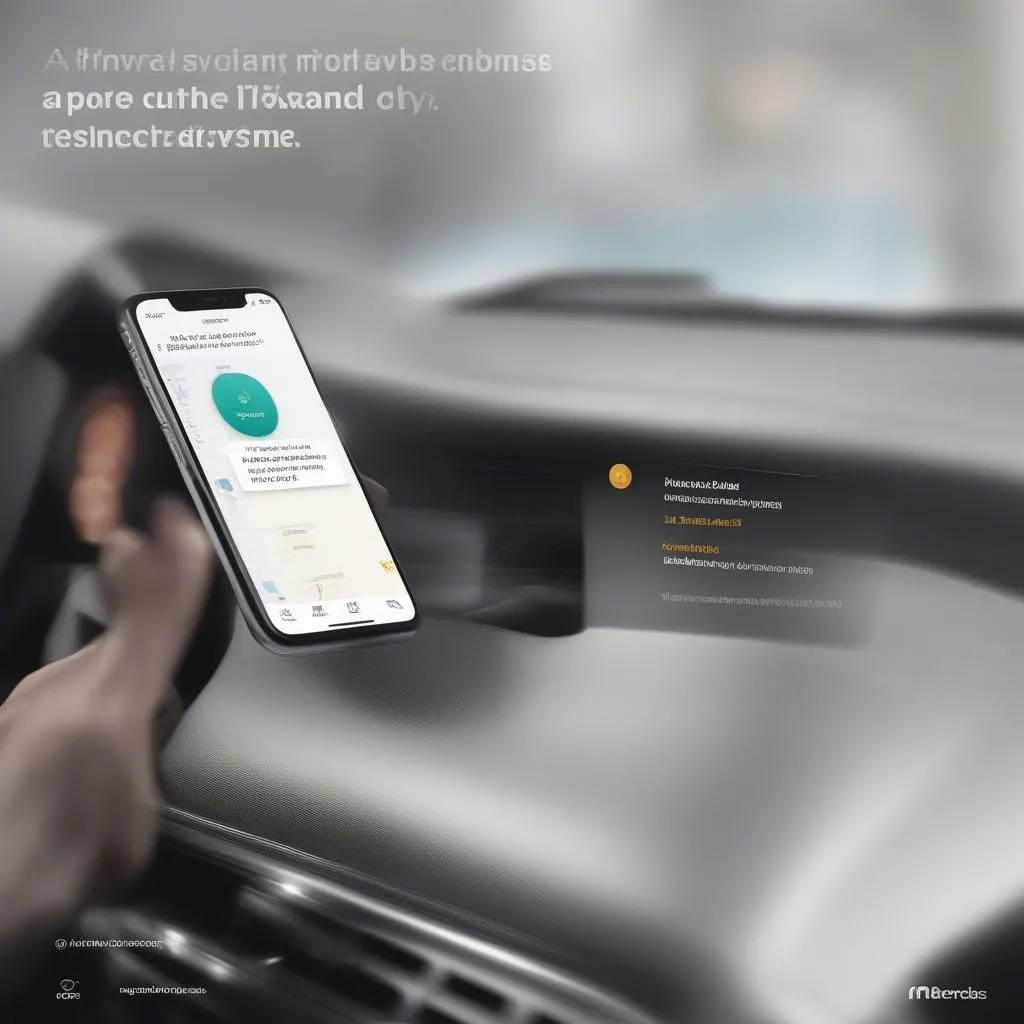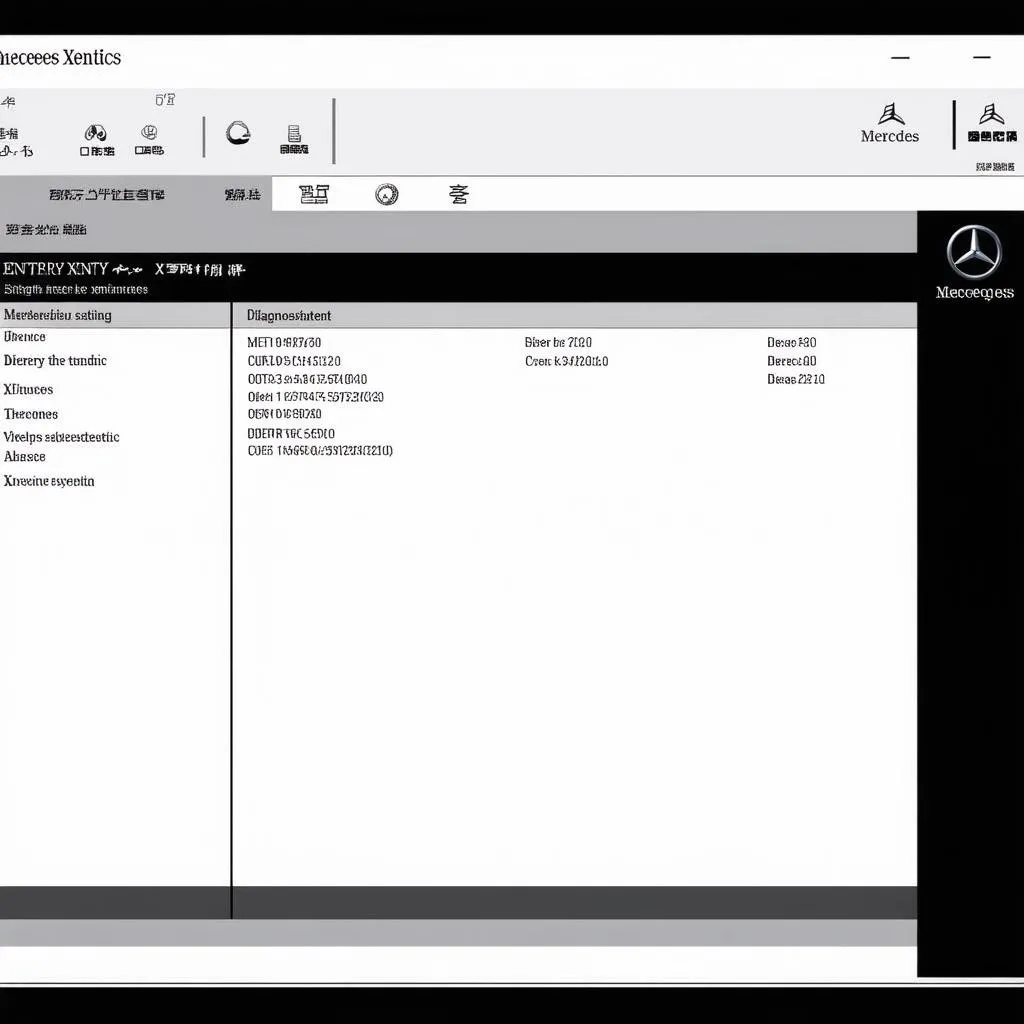A malfunctioning trunk lock can be a real headache, especially on a classic model like your 1997 Mercedes Benz. Whether it’s stuck, jammed, or simply unresponsive, a broken trunk lock can limit your access to essential storage space. Fortunately, troubleshooting this issue is often simpler than you might expect. This guide will walk you through common causes and solutions to get your trunk back in working order.
Common Causes of Trunk Lock Problems
Before diving into fixes, it’s helpful to understand what might be causing your trunk lock to act up. Here are some typical culprits:
- Faulty Actuator: The actuator is an electronic component that controls the locking mechanism. Over time, it can wear out or fail, preventing the trunk from opening or closing properly.
- Broken Wiring: The wiring harness connecting the actuator to the car’s electrical system can become damaged due to corrosion, wear and tear, or accidental cuts. This can disrupt the electrical signal and render the lock inoperable.
- Mechanical Malfunction: Issues like a bent lock rod, a jammed latch, or a broken spring can also prevent the trunk from opening smoothly.
- Key Fob Battery: If you’re using the key fob to unlock the trunk and it’s not working, a dead battery in the fob itself could be the issue.
- Fuse Problem: A blown fuse in your car’s fuse box can cut off power to the trunk release system.
Identifying the Problem
Pinpointing the exact cause is key to implementing the right solution. Here’s a simple diagnostic approach:
- Test the key fob: Replace the battery if needed. If the fob works intermittently, the issue might be with the fob itself or its programming.
- Listen for the actuator: When you press the trunk release button, do you hear a faint clicking sound from the trunk area? This indicates the actuator is receiving power. If not, the problem might be electrical.
- Inspect the trunk latch: Try to open the trunk manually using the key while someone else presses the trunk release button. If you feel resistance or the key won’t turn, there might be a mechanical problem with the lock cylinder or latch assembly.
Tools and Materials
Here’s what you’ll need to fix your trunk lock:
- Screwdrivers: Philips and flathead, in various sizes to remove interior trim panels and access the lock mechanism.
- Socket Set: May be needed to remove bolts securing the lock assembly.
- WD-40 or similar lubricant: For loosening rusted or stuck parts.
- Electrical Tape: For insulating and securing electrical connections.
- Multimeter (Optional): Helpful for testing continuity in wires and voltage to the actuator.
- Replacement Parts: Depending on the issue, you might need a new actuator, lock cylinder, latch assembly, or wiring harness. Consult your owner’s manual or a parts specialist to ensure you get the correct components for your specific Mercedes model.
 Mercedes Benz Trunk Latch Assembly
Mercedes Benz Trunk Latch Assembly
Repairing the Trunk Lock
Once you’ve identified the problem, you can proceed with the appropriate fix. Here are some common repairs:
1. Replacing the Trunk Actuator
- Access the actuator: This typically involves removing the trunk liner or a section of the rear seat back to expose the actuator, which is usually mounted near the lock mechanism.
- Disconnect the wiring: Carefully unplug the electrical connector from the actuator.
- Remove and replace: Unscrew the actuator from its mounting point and install the new one in reverse order.
2. Repairing or Replacing Faulty Wiring
- Trace the wiring harness: Follow the wires from the actuator towards the vehicle’s interior to check for any visible damage, cuts, or corrosion.
- Repair or replace: If you find damage, you can try to repair the wire using electrical tape or replace the entire section of the harness.
3. Addressing Mechanical Issues
- Lubricate the lock cylinder: If the key won’t turn smoothly, try spraying some WD-40 or similar lubricant into the keyhole and work the key in and out to distribute the lubricant.
- Inspect and free the latch: If you suspect a jammed latch, you might need to access it from inside the trunk (often by folding down the rear seats). Use a screwdriver or pry tool to gently try and release the latch.
 Car Diagnostic Tool Plugged In
Car Diagnostic Tool Plugged In
Frequently Asked Questions
Can I use a diagnostic tool to troubleshoot trunk lock issues?
Yes, a compatible car diagnostic tool, such as those offered by CARDIAGTECH, can read fault codes stored in your Mercedes’s onboard computer. These codes can provide valuable insights into electrical problems affecting the trunk lock, such as a faulty actuator or wiring issues.
Why is my trunk opening on its own?
This could indicate a short circuit in the wiring harness, a malfunctioning actuator, or a problem with the key fob. A qualified mechanic or auto electrician can diagnose and address this issue safely.
My trunk lock is frozen shut. What should I do?
Do not force it. Try using a hairdryer to warm up the lock cylinder and surrounding area. You can also use de-icer fluid specifically designed for car locks.
Conclusion
Dealing with a stubborn trunk lock can be frustrating, but with a bit of patience and the right information, you can often resolve the issue yourself. By carefully inspecting the mechanism, testing electrical components, and addressing any mechanical faults, you can regain access to your trunk and restore your Mercedes to optimal working order. However, for complex electrical problems or if you’re uncomfortable working on your vehicle, it’s always best to seek assistance from a qualified mechanic or an authorized Mercedes-Benz service center.


